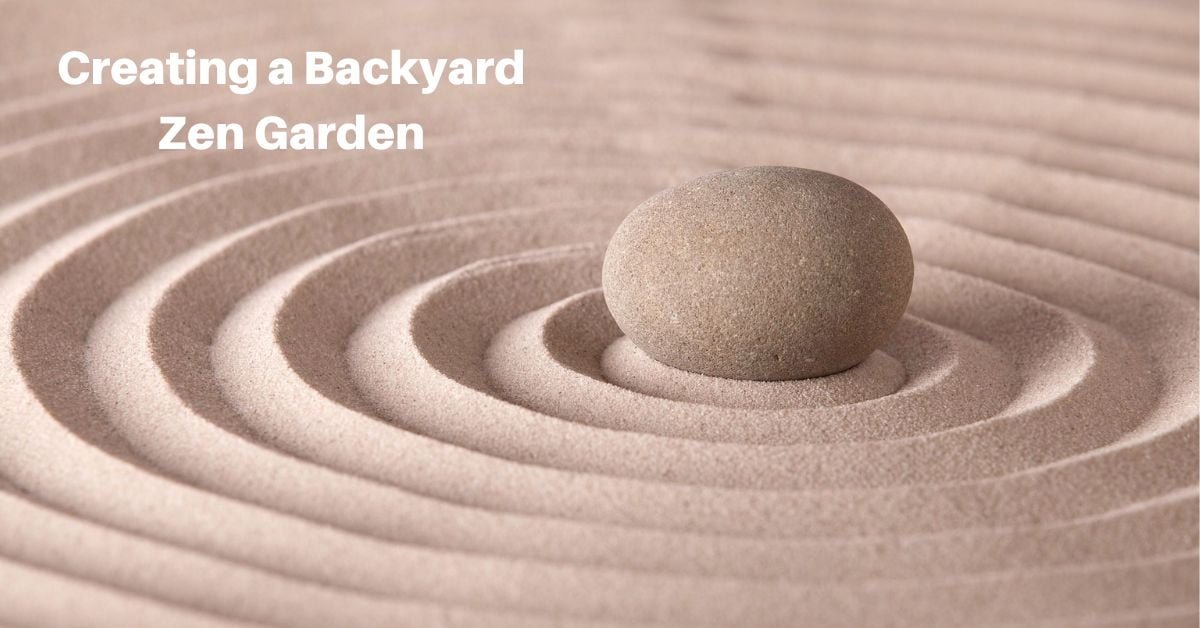In the hustle and bustle of modern life, finding a quiet space where we can disconnect and rejuvenate becomes essential. A Zen garden can be a great way to achieve that — it’s a minimalist retreat inspired by ancient Japanese traditions, designed to foster peace and mindfulness. The serene setting can instantly calm your mind, and the meticulously arranged rocks and raked sand seem to whisk away the day’s worries.
Understanding Zen Gardens
A Zen garden, or Japanese rock garden, involves an elegant yet simple arrangement of rocks, gravel, and sparse vegetation. These traditional gardens get to the essence of nature and serve as a tool for meditation. Each element in a Zen garden has a purpose, whether it’s the rocks that represent islands or the raked gravel symbolizing ocean waves.
Embracing these Zen principles can turn a section of your yard into a calming sanctuary.
Choosing a Location
The location of your Zen garden plays a pivotal role in its effectiveness as a space for relaxation. Choose a spot that is somewhat secluded and away from the noise and activity of household traffic. A corner of the garden can work well since it provides natural boundaries and a sense of privacy.
Consider the amount of sunlight the area receives. While some Zen garden plants require sunlight, too much direct sun can alter the intended calming aesthetic of the garden. Partial shade can provide a balanced environment.
Also, ensure the site is easily accessible yet detached enough to provide a retreat. The garden should be a convenient sanctuary that you can visit daily.
Designing Your Zen Garden
Planning the layout of your Zen garden is crucial. This step involves more than just deciding where things go; it reflects the Zen principle of intentionality. Here’s how to start:
Layout Planning
Sketch your proposed garden layout. Think about how you will view the garden and from which angles. The design should promote a flow of movement and thought.
Scale and Proportion
Keep the scale modest unless you have ample space for more elaborate designs. Fewer elements are better in a smaller space so as not to overwhelm the area. The key is simplicity and balance. This will let you appreciate each part of the garden fully.
Selecting Materials
The materials you choose for your Zen garden should reflect the natural world and adhere to the minimalist theme:
- Rocks and Gravel: Select rocks that offer a natural, aged appearance, and opt for gravel or sand in neutral colors. These elements are central to the garden’s design, symbolizing stability and tranquility.
- Plants: Choose plants that enhance the garden without dominating it. Species like moss and small shrubs or bamboo work well, adding softness and greenery that contrast with the hardness of the rocks.
Constructing Your Zen Garden
With your design planned and materials chosen, it’s time to start constructing your Zen garden. This phase transforms your vision into reality, layering each element with care and mindfulness.
- Clearing the Space: Begin by clearing the area of any weeds, debris, or other unwanted materials. This creates a clean slate for laying out your garden components.
- Setting Boundaries: Depending on your design, you may want to define the garden’s boundaries using wooden borders, stones, or low shrubs. This helps separate the space visually and physically from the rest of your yard.
- Laying the Foundation: Spread a layer of sand or fine gravel over the area to serve as the base of your garden. It should be deep enough to allow for raking without exposing the ground underneath. That’s usually about three to four inches.
- Placing Rocks: Position the larger rocks according to your layout plan. You can think of these as the bones of the Zen garden. Place them thoughtfully; it’s also helpful to use an odd number of large rocks, which is traditionally more pleasing and natural-looking.
- Raking the Gravel: Use a rake to create patterns around the rocks. These patterns can resemble water ripples or waves and are central to the meditative aspect of Zen gardens. The act of raking is considered a meditative practice itself, helping to calm the mind and focus thoughts.
Adding Plants and Water Features
Plants and water features, while not always present, can enhance the tranquility of a Zen garden. They add life and a subtle dynamic element to the static rocks and sand.
Selecting Plants
Choose plants that maintain the Zen garden’s minimalist aesthetic. Mosses, ground covers, and small evergreens like junipers are popular choices. Position them to complement the rocks and ensure they don’t overwhelm the space.
Incorporating Water Features
Integrate a small reflecting pool or fountain to add a sensory layer to the garden. The sound of water is soothing and can deepen the sense of peace in the garden. Like everything else in your Zen garden, you want your water feature to be simple so that the focus remains on meditation.
Maintaining Your Zen Garden
Maintenance is essential to preserving the spirit and physical appearance of your Zen garden. Regular upkeep will keep the garden looking its best and serve as an ongoing practice of mindfulness and care.
Regular Raking
Keep your gravel or sand raked and clean. This maintains the aesthetic, prevents weeds, and keeps the garden tidy.
Pruning and Caring for Plants
Pruning and tending to the plants in your Zen garden regularly helps maintain their shape and health, fitting the garden’s minimalist approach.
Seasonal Adjustments
Be prepared to adjust your garden seasonally. This might involve protecting plants from frost, refreshing the gravel, or cleaning out debris after storms.
Creating a Zen garden is not just a landscaping project; it’s an invitation to embrace a quieter, more contemplative aspect of life. It offers a space for relaxation and meditation, helping to balance the busy pace of daily routines. Whether you’re raking the sand in meditative solitude or simply enjoying the serene beauty of the space with family, a Zen garden can be a source of peace and reflection in your home.
Remember that a Zen garden is a dynamic canvas in your yard, but also in your mind. Each stone, each plant, and each rake pattern can represent moments of stillness and clarity, which are hard to attain in our fast-moving world!









